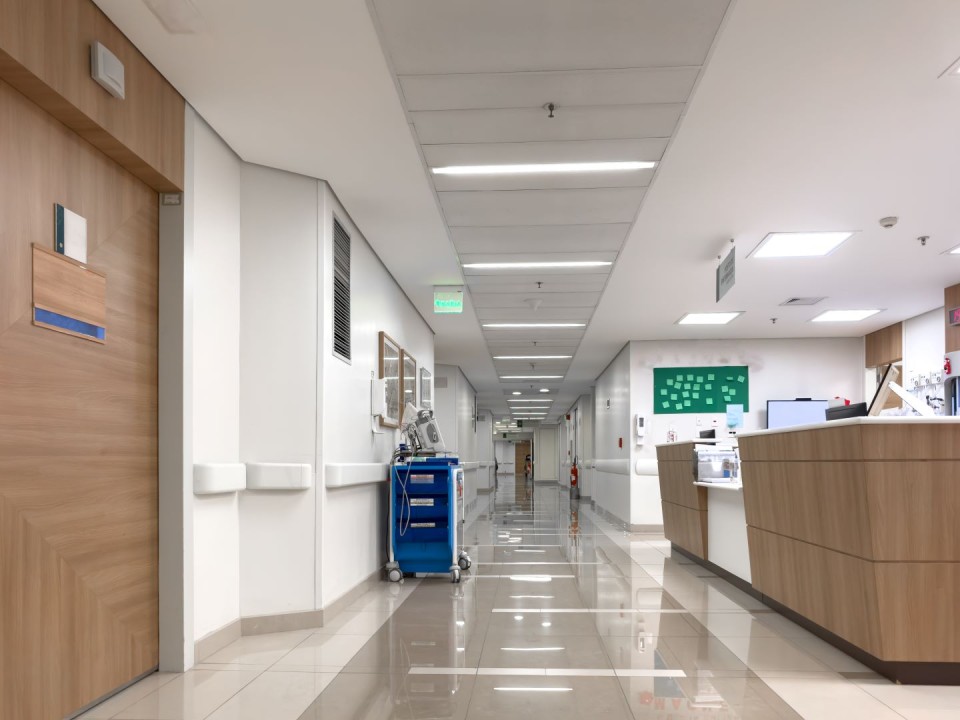
How hospitals can weather the perfect storm
Inside a hospital, doctors, nurses, patients and families expect every piece of equipment to work every time. And they should — the mechanical, electrical and plumbing (MEP) systems threaded throughout health care facilities are the very definition of lifesaving. But when it comes to these essential systems, our hospitals are facing a perfect storm.
Aging infrastructure and deferred maintenance are colliding with increased demand from the COVID-19 pandemic and environmental impacts from climate change. That clash comes with disastrous results: flooded facilities from weather events like Hurricane Sandy, burst pipes during frigid winters, electrical failures like the one at Santa Clara Valley Medical Center in San Jose, Calif. Without electricity, ventilation, lights and other utilities, the routine urgencies that health care workers manage every minute can quickly become full-blown emergencies.
In the middle of the storm, though, there are steps that health care administrators can take to mitigate its impacts — and prepare for the next one.
Create a robust, honest facility condition assessment. Most U.S. hospitals were built in the 1970s, with some buildings dating back to the 1920s. With a solid facility plan, health care administrators have information about the age of their infrastructure, the lifetime of their equipment and how long it might continue to serve them. This critical data helps them understand the vulnerabilities of their buildings and create thoughtful plans for maintenance, repair and replacement. It also provides officials with a window into how systems can handle environmental changes. For example, experts have made predictions about how one degree of temperature increase can shift demands on emergency departments. That slight uptick can put more stress on air handlers and mechanical systems at a time when more patients might need emergency services.
Marry that assessment with a forward-thinking master plan. This type of master plan accounts for future expansion needs and potential shifts in technology. For certain hospitals, a facility condition assessment might reveal that renovations don’t make financial sense, and they should take down aging buildings and build new in its place. We worked with a health care provider in Rhode Island that went this route and oversized their mechanical systems on a new structure. That proactive decision made it possible for the systems to support a future piece of the campus, without having to redo the mechanicals or create an entirely new set. It’s a smart, forward-thinking investment that saves time and money in the long run — and is only possible when administrators have the full picture.
Build a proactive plan now for when things go wrong. Yes, there’s that “plan” word again, which is especially important in our evolving climate. Suffolk’s Director of MEP Engineering Kevin Malenchini always says to plan for future capacity requirements. Find ways to make system shutdowns easier, as additional shut-off valves, dampers and breakers installed during construction can make future MEP upgrades less disruptive to hospital operations. Have redundant equipment for pumps, fans and generators, assuming at least one piece of equipment is down for maintenance. And, finally, plan for the worst-case scenario — what should be on emergency power when a facility loses power, what sensitive equipment should never see an interruption in power when switching to a generator, how to keep floods from traveling to other floors and more. Vice President of Operations Rory MacRae encountered this worst-case scenario when he was working at NYU Langone as Hurricane Sandy hit New York.
During the hurricane, utility provider Con Edison experienced a full power failure south of 34th Steet in Manhattan. As a result, NYU Langone, VA New York Harbor, Bellevue, and Coney Island Hospital all lost primary and backup power and needed to be evacuated throughout the night to other facilities. The brackish saltwater from the East River and the Atlantic Ocean that flooded the basements and cellars of these medical centers caused irreparable damage to the copper electrical system components.
It took NYU Langone two full months to come back online. For Rory, that experience came with valuable lessons: that hospitals that exist within the 100- or even the 500-year floodplain need to be prepared for these powerful storms happening more often. Deployable systems — sandbag, dams and other temporary measures — can serve as backup plans, but flood-prone hospitals need a full review done by resiliency consultants that can advise on a holistic plan and design.
With patients in need every minute, hospital administrators already have plenty on their minds. That’s why our dedicated health care builders and MEP experts are ready to be with them every step of the way, making sure their facilities can be ready for whatever the storm holds.
Absolutely, keeping healthcare facilities functional in times of disaster is vital! 🌱 As Helen Keller once said, "Alone we can do so little; together we can do so much." Perhaps this resonates with Treegens' mission. By the way, did you know about the upcoming Guinness World Record attempt for Tree Planting? There's a sponsorship opportunity available. Find out more here: http://bit.ly/TreeGuinnessWorldRecord 🌿 Let's make a difference together!
🏝Founder of Slice of Media & BlocHealth (acquired)
2moGreat read! Kudos to the dedicated professionals making our hospitals safer and more adaptable to future demands.
President, D.J.C. Medical, Inc.
4moMark, Great information and sound advice.